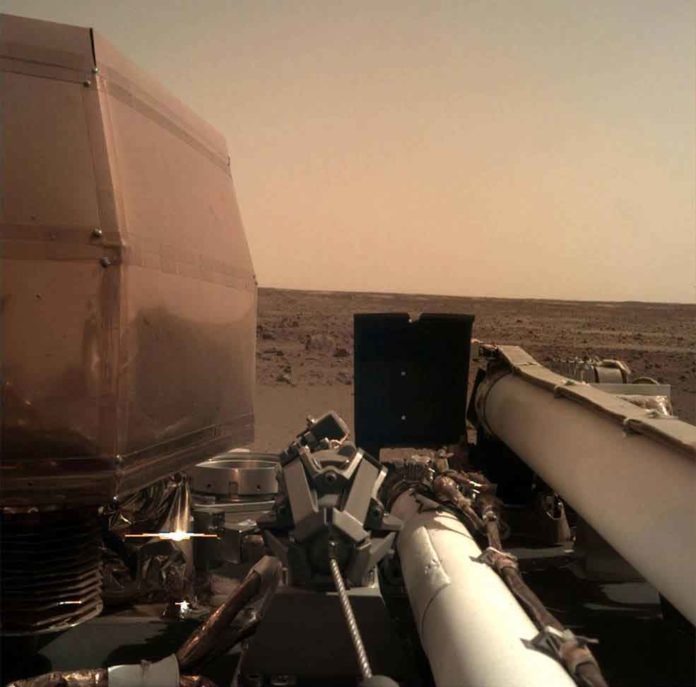After a successful landing on Martian surface, NASA’s InSight has sent signals to Earth indicating that its solar panels are open and collecting sunlight on the Martian surface.
NASA‘s Mars Odyssey orbiter transferred the signals, which were gotten on Earth at about 5:30 p.m. PST (8:30 p.m. EST). Solar array deployment guarantees the rocket can energize its batteries every day. Odyssey additionally handed-off a couple of pictures demonstrating InSight’s landing site.
InSight’s twin solar arrays are each 7 feet (2.2 meters) wide; when they’re open, the entire lander is about the size of a big 1960s convertible. Mars has weaker sunlight than Earth because it’s much farther away from the Sun.
The solar panels give 600 to 700 watts on a clear morning, enough to power a household blender and bounty to keep its instruments leading science on the Red Planet. Even when dust covers the boards — what is probably going to be a typical event on Mars — they ought to have the capacity to give no less than 200 to 300 watts.
The panels are modeled on those used with NASA’s Phoenix Mars Lander, though InSight’s are slightly larger in order to provide more power output and to increase their structural strength.
Tom Hoffman, InSight‘s project manager at NASA’s Jet Propulsion Laboratory in Pasadena, California said, “The InSight team can rest a little easier tonight now that we know the spacecraft solar arrays are deployed and recharging the batteries. It’s been a long day for the team. But tomorrow begins an exciting new chapter for InSight: surface operations and the beginning of the instrument deployment phase.”
